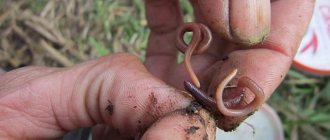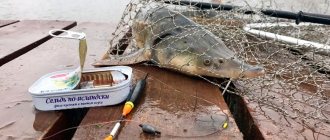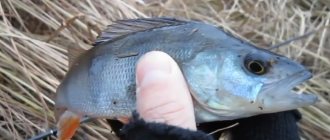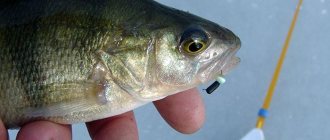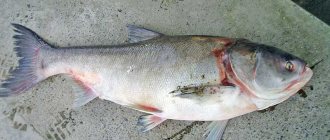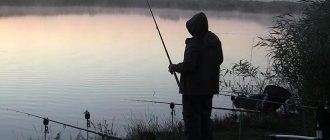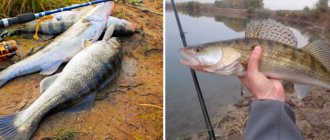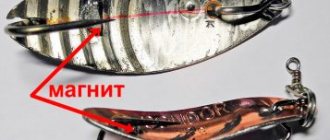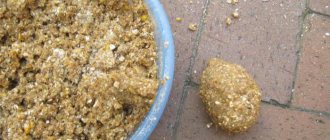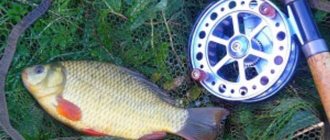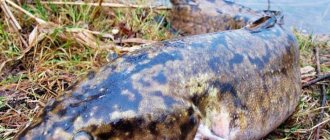Bait for autumn crucian carp
If September turned out to be quite warm, then the crucian carp may still be close to the shore in dense thickets, waiting for an appetizing bait.
Using summer bait, you can attract a fairly large school of these fish, but this will only work if September turns out to be warm.
Considering that the weather has not been particularly kind to us lately, and the cold snap came quite quickly, the crucian carp reacts very strongly to such changes. As soon as the water begins to rapidly cool, this fish begins to move away from the shores into the depths, accumulating in schools in holes.
As the weather gets colder, crucian carp becomes less active, so even the most appetizing and aromatic bait is unlikely to budge it. Therefore, it will be very and almost impossible to lure him, unless you throw your bait directly into a concentration of these fish.
Crucian carp in September
September is the period when the heat goes away and the fish become more active, as the ideal time for crucian carp begins. Now the fish will be much better at grabbing the food given to them, and fishermen will have an excellent option to go fishing. Fishing for crucian carp in the fall also plays with other colors. The fish grab the bait quite often. The most important thing is that the weather does not let you down. A low drop in temperature or pressure has a pretty bad effect on the catch. Another plus for the fisherman is that the chances of catching a big fish during this period increase significantly, so you need to be prepared for the fish to be quite a respectable size. In addition, you can notice that the temperature in the river decreases much faster when compared with stagnant reservoirs, and the fish become less active when the water cools. For this reason, fishing in ponds in autumn is especially stable. When the weather remains calm and warm, the rivers will also bring good trophies. Autumn is a turning point for crucian carp fishing. For this reason, this fishing time is divided into several stages with different fishing techniques.
Read: Catching crucian carp with a plug
Of course, weather conditions always greatly influence the fishing result. In the first autumn days, the fish take the bait quite well, but as soon as the heat goes away, the crucian carp just go crazy and start eating almost everything. It is worth catching crucian carp in the first weeks of September in small areas that are located in the coastal area, where there is a lot of grass or sunken trees.
At the very beginning of September, you can observe a huge amount of food and plants along the shore, and in such places you can find a huge amount of fish. Our fish are especially active on calm days, the sun is still warm, and the breeze sends light waves towards the shore, bringing thus food that ends up in the water. September 10-20.
By the third week of September it is already getting cold, so the bite decreases. The fish gather in large schools and swim a long distance from the shore. During this period, you should send the bait to the deepest parts of the reservoir, approximately to a depth of at least 3 meters. It’s great if you find a place on the river where the bottom is not level and there is a difference in depth. When there are also snags next to the holes that are at the bottom, such a place is ideal for any fisherman. With a sharp drop in temperature, the fish become not particularly active, while from a deep area it is possible to catch quite large individuals, which are much more difficult to catch in the summer.
Read: DIY bait for crucian carp
In addition to all of the above, it is worth taking into account the difference in fishing time. For example, in the summer you can catch crucian carp almost around the clock, but in the fall you should not fish for crucian carp at night. In the warm season, crucian carp bite well at night, since at this time the fish take a break from the sun. On the other hand, in September he feels uncomfortable in the dark as the temperature drops. Further, you should go fishing at any time except at night. But when the month remains warm, you can still get a catch, but this happens quite rarely. Moreover, it is advisable to catch fish early in the morning and after lunch. After four o'clock in the evening there is an opportunity to fish until complete darkness. In the second half of September, the rules change again, the weather makes some adjustments to fishing. When it suddenly gets cold at the end of the month, the fish becomes especially active because it needs food, it is advisable to choose the time - from 1 to 17: 01-16: 00 hours. But it is best to go to the reservoir only in the early morning, while the fish are especially active.
What to catch crucian carp with in the fall: the best bait
With the advent of autumn and cold weather, even if only at night, the feeding preferences of crucian carp also change. Such changes are associated with the fact that the natural food supply is changing and crucian carp in the fall needs protein, which is contained only in bait of animal origin.
In the fall, crucian carp practically stops responding to baits that worked well in the summer, such as mastyrka, bread, pearl barley, corn, etc. Now the crucian carp should be offered:
- worm;
- maggot;
- bloodworm.
Having these three baits you can count on successful catching of crucian carp. Having only one of them can make a mistake. Crucian carp becomes very capricious in the fall; today it can only peck at maggots, and tomorrow exclusively at bloodworms. It may be that all three of the above baits will not interest the crucian carp. In this case, you should create sandwiches from baits.
As sandwiches, you can combine bloodworms with maggots, maggots with a worm, bloodworms with a worm on a hook. For sandwiches, you can also use bait of plant origin, only one of the ingredients must be animal bait. An example of such a sandwich:
corn with worm;- corn with maggot;
- pearl barley with bloodworms, etc.
It is very interesting that the bite of small and medium-sized crucian carp in the fall on bait of plant origin is almost completely absent; plant baits can only work in combination with animal bait on the hook. But, nevertheless, large crucian carp continue to respond to plant baits. You can wait a long time for a bite, you may not even wait at all, but the fact that large crucian carp can still be caught on corn, barley or bread is a fact.
Considering the above, you can guess how effective a sandwich bait, combined with animal and plant bait, can be. Even standard crucian carp will bite on such bait, and there is an increased probability of a large specimen being bitten.
Tackle
If you decide to use a fly rod for catching crucian carp in the fall, then firstly take a float that can hold a load weighing 1.5-3 grams, a fishing line with a diameter of 0.14-0.16 mm and a hook No. 12-14. The shipment of the tackle will consist of a chain of sinkers located at a distance of 10-15 cm from each other. Since in the autumn he prefers large bait, the distance from the bait to the hook will be at least 15-20 cm.
If there is strong wind in the place where you are fishing for crucian carp, I would recommend using a plug rod. A fly rod is not suitable here due to the possible rapid movement of the bait near the bottom surface and the crucian carp simply will not be able to keep up with it.
On the other hand, crucian carp practically do not bite near the shore if there is a dead calm on the reservoir. The exception, perhaps, is the large coastal depths of the reservoir, in particular, near the dam. You should also not forget that crucian carp never take bait from the bottom, but only the one that moves near the bottom surface.
Most often, fishermen fish with a plug rod 11 meters long, and then, depending on the fishing conditions, they take either a 13-meter or 9.5-meter rod. It is also important to choose the correct weight and design of the float, since crucian carp fishing in the autumn is done using a fishing line with a diameter of at least 0.14 mm, and this creates a large windage in the wind.
Therefore, I would not recommend using floats weighing less than 0.7 grams, because the main thing when catching crucian carp in the fall is the stability of the float. In this regard, floats with a deepened center of gravity, made in the shape of an elongated drop, have proven themselves well. The optimal load capacity for these floats is 1-1.5 g.
In practice, usually, crucian carp fishing in the fall occurs using a Waggler-type float, which has replaceable weights in the lower part. Here, a float with a load capacity of 8 grams is considered optimal.
Making your own gear
When assembling a float rod for autumn crucian fishing, it is necessary to solve a difficult dilemma. On the one hand, it is necessary to cast the bait long distances, since fish rarely come to the shore to feed. On the other hand, wary crucian carp and clear water force you to equip your fishing rod with the thinnest fishing lines and small hooks. Only by maintaining a balance between these two factors will you be able to achieve a good result during autumn fishing. With this approach, match tackle is best suited.
- For autumn fishing, a long (4-6 m) but light rod equipped with guides is required.
- A spinning reel with a 1500-2000 spool according to the Shimanov classification is mounted on the fishing rod.
- For the main line, a model with a diameter of 0.14-0.16 mm and a length of 100-150 m is suitable.
- It is better to make a leash from a piece of fluorocarbon fishing line with a thickness of 0.08-0.12 mm.
- Since fishing occurs at a depth of up to 5 m, a sliding float is mounted on the main line.
- To properly load the float, a sinker is installed on the main line. Its weight is chosen in such a way as to completely drown the body of the float. To load the antenna to the working depth, a small pellet is attached to the leash, which is called a pad. If a crucian carp lifts the bait from the bottom, the antenna will float up, signaling the fisherman about a bite.
- The choice of hook depends on the size of the bait and the size of the likely catch. For example, when using bloodworms, a thin and sharp hook No. 12-16 is required, and when hooking a worm, a larger hook No. 8-10 is needed.
Equipment for catching crucian carp with a float rod
There are no special requirements for fishing tackle or rigging for crucian carp. The only thing you need to take into account is that in the fall it is better to catch crucian carp with a longer rod of 5-6 or even 7 meters, because at this time the crucian carp stays in deeper parts of the reservoir.
Fishing line. It is optimal to use a fishing line with a diameter of 0.15-0.2 mm. This line is quite thin so as not to make the crucian wary and at the same time quite strong to catch even large crucian carp.
Hook. Hooks for crucian carp are numbered 5-7 according to domestic numbering. Hooks with a long shank are best. You can learn more about choosing a hook for crucian carp here.
Float. A float for catching crucian carp is most often an individual choice. Each fisherman has his own preferences and it is more convenient for everyone to fish with a float of one shape or another with a certain carrying capacity. I prefer to catch crucian carp with goose feather type floats. Such floats have very good sensitivity, making bites very clearly visible and this is very convenient. Find out more about choosing a float for crucian carp here.
Well, we’ve sorted out the equipment and it’s time to move on to more specific issues that may affect the outcome of the fishing trip.
